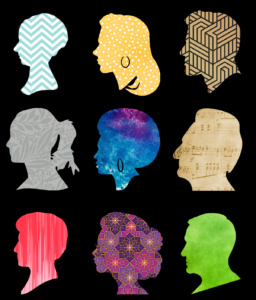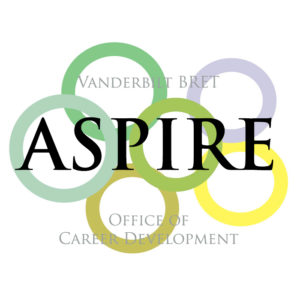Writing Teaching and Diversity Statements

This post condenses a session led by Greg Smith and Alex Oxner, graduate teaching fellows at Vanderbilt’s Center for Teaching, as part of the ASPIRE Postdoc Café.
Of the documents required for a faculty job application packet, the teaching statement and diversity statement may be the most mysterious. While fellowship applications and your dissertation have probably given you some experience with the research statement, these pieces may well be unlike anything you’ve had to write before.
The Teaching Statement

If you haven’t taught a class, describe teaching techniques or lab protocol to a student or peer new to your research group.
Whether you’re applying for jobs that require teaching four courses a semester or only one every few years, this statement gives the search committee an idea of who you are in the classroom. The statement itself combines philosophy and action—both what you believe about teaching and learning and how you enact those beliefs. Tell the committee what you believe is most important for students to learn in a specific course, and how you gauge that they have learned it. Use concrete examples from your own teaching, if you have them, of how you have operationalized your ideas of what and how students should learn.
Haven’t taught a class before? This statement can be aspirational: What would you do in the classroom? Write about your experiences teaching labmates in small groups or one on one, and connect those experiences to how you would teach a class.
What the Committee Wants to Know
As they read your teaching statement, committee members are asking themselves:
- Can I imagine this person’s classroom?
- Would this person be a good colleague?
- Would this person contribute to the department?
- Can I learn from this person?
Top Pointers (from people who read a lot of these)
- Use language from the job posting. If the job is to teach underwater basketweaving, don’t write about how much you enjoy teaching airborne crochet. At least, not if you can’t then link that experience to how you would teach underwater basketweaving.
- Consider the institution type. A teaching statement for a liberal arts college will look different from a statement for a research university.
- Have a solid structure. These statements are a bit like manuscripts; they should have an introduction, which is your overall goal for teaching, and several objectives.
- Explain how your research influences your teaching. Many draw from their own data or experiences as a researcher to bring concepts to life.
- Articulate goals for student learning. Show how you teach to meet these goals.
- Describe how you evaluate student learning. It’s good to have goals, but how do you prove you’ve met them?
- Use concrete language. Avoid characterizing your teaching only with bland adjectives: “I try to make class fun and engaging.” Instead, show how you make class fun and engaging: “In both upper- and lower-level courses, one of my most successful ways of teaching students to take charge of their learning and others’ is an assignment I call cofacilitation, in which I empower students to teach one another. Halfway through the term, after I have spent weeks modeling various kinds of lectures, discussions, and in-class activities, I let students volunteer to facilitate a class session or portion thereof with me. In a cofacilitation assignment, a pair of students completes assigned readings for the week early, so that they can meet with me in office hours the day before a class and develop a lesson plan….”
- Believe in yourself. Convey your confidence through verb choice (“I will” vs. “I would”) and showcasing successful teaching endeavors, for example with specific student feedback.
The Diversity Statement

How do you teach and serve diverse student bodies?
The diversity statement shows the committee what you bring to the table as a partner in the institution’s diversity and equity efforts. How can you help them achieve inclusion, equity, toppling systemic oppression, or whatever their specific goals are? (Most institutions have an office of diversity, equality, or a similar term. Visit their website and see what they have to say.)
What to Include
- What student populations do you gear your teaching toward? If the institution you’re applying to serves a particular population (such as HBCUs, women’s colleges, or universities with a high population of Pell grant recipients), show how you plan to reach those students.
- How do you teach and serve diverse student bodies? Consider not only the race/ethnicity/gender variables, but diversity in age, religion, national origin, socioeconomic status, disability, sexual orientation, gender expression, academic preparedness, and other attributes.
- How will you create a classroom where everyone feels included?
- How do you seek diversity and equity in areas beyond classroom teaching? For example, in your scholarship, service, mentoring, patient care, or interactions with colleagues.
- Can you share examples of participation in service activities with goals related to diversity, inclusion, and equity? This can include on- and off-campus activities such as committees, symposiums, workshops, or volunteer work. Describe your experience: What did you accomplish? What did you learn? What skills did you build?
- If you choose to identify as a member of a minority population, explain how it impacts your teaching. Simply stating you are a minority or have faced discrimination does little without the tie to teaching.
Your diversity statement will look a lot like your teaching philosophy—and that’s okay. They both look at teaching from different angles. For both, specifics are key. Don’t just say you’re a good teacher, or you appreciate diversity. Show it with examples from your past experience and ideas for how you’ll teach on this campus.
More Resources
Vanderbilt Center for Teaching: Teaching Statements and Diversity Statements
Writing a Strong Teaching Statement
The Professor Is In: The Dreaded Teaching Statement: Eight Pitfalls
Sample teaching statement (Chemistry)
Sample teaching statement (Biology)
The Effective Diversity Statement
Writing a Diversity Statement
UCSF diversity statement examples (healthcare fields)
This article was written by Rebecca Helton of Edge for Scholars based on a workshop hosted by the ASPIRE program.
More Edge Resources
Not That Kind of Tale: Roundup for the Academic Job Season
Ten Tips for Interviewing for a Faculty Position
Interviewing Do’s and Don’ts (from Those Who’ve Seen It All)






0 Comments